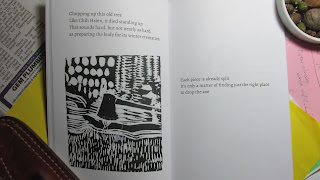EUELL GIBBONS -- 44 YEARS LATER
Gibbons died December 29, 1975
[Nyerges
is the author of “Guide to Wild Foods” and other books. He can be reached at Box 41834, Eagle Rock,
CA 90041 or www.ChristopherNyerges.com.]
Has it
been that long already? In 1974, a
strange man entered America’s consciousness via television. Acting out what seemed to be primitive rites,
he would brandish cattails, goldenrod, hickory nuts, and pine branches,
instructing the viewers that “many parts are edible, you know.”
Euell
Gibbons rapidly became fodder for comedians who turned his “Stalking the Wild
...” book titles into the comedy cliché of the year. But, in the summer of 1975, the Federal Trade
Commission ordered Gibbons’ commercials for Post Grape-Nuts cereal off the air,
and, by the time he died on December 29 of 1975, Gibbons’ celebrity had
diminished considerably.
That
was a shame, for Gibbons did have a valuable message for America: There are tons of wild, nutritious food
growing everywhere in this country that we could -- but don’t -- eat. Gibbons believed that the main reason that
Americans shun wild food is fear of ridicule if they stoop to gather weeds,
which are generally regarded as suitable only for the trash can, not the dinner
table.
The FTC
ruling appeared to speak to a deeper fear:
fear of the unknown. In the
cereal commercials, Gibbons spoke of his years of foraging for wild food. “Ever eat a pine tree?” he asked in one
spot. “Many parts are edible. Natural ingredients are important to me. That’s why Post Grape-Nuts is part of my
breakfast.”
The FTC
objected to the apparent connection, especially as it might be interpreted by
children. The ruling said that the
commercials “undercut a commonly recognized safety principle -- namely, that
children should not eat any plants found growing in natural surroundings,
except under adult supervision.”
Despite
its good intentions, the FTC succeeded in generating a great wave of mistrust
and fear of all wild food, despite the fact that Gibbons stressed in his books
and countless public appearances that you much never eat any plant or part of a
plant until you recognize it as edible.
Shortly after the FTC ruling, the media latched onto two incidents in
which teen-agers who had been captivated by Gibbons’ living-off-the-land philosophy
became ill when they mistakenly ate toxic plants while foraging near the
Angeles National Forest.
Gibbons’
death of unspecified “natural causes” at the age of 64 seemed to seal his
reputation as a “kook.” At worst, people
suspected that he had accidentally poisoned himself (he hadn’t); at best, it
appeared that eating “natural” foods did not contribute to longevity. But those of us who saw the real value of
Gibbons’ teachings still feel that he left us with a precious legacy.
I first
encountered Gibbons in 1972, through his writings. Excited and fascinated by “Stalking the Wild
Asparagus” and his other books, I explored fields and woods across the country
in search of wild edibles. In 1974, I
began to share what I had learned by conducting Wild Food Outings in the Los
Angeles area.
I
finally met Gibbons after he gave a lecture at Pasadena City College. We chatted for the better part of an hour,
our conversation ranging from carob pods to American Indians to compost. He told me of his plans for television
documentaries about primitive societies that still live totally ecological
lives. Gibbons said he hoped to show the
modern world some of the follies of civilization.
One of
these follies is the persistence -- the expenditure of so much time and money
-- in attempting to eradicate from our yards and parks plants that have thrived
for centuries. Some of the most common
edible “intruders” are dandelion, lamb’s quarter, pigweed, mallow, mustard, and
sow thistle. Among the most enduring of
wild plants that were brought to California in the westward migrations is
chickweed. To even the most pampered
palate, it is an incredibly good salad green, yet it often leads the list of
“garden pests” in advertisements for herbicides. Other “enemies” highly valued by herbalists
and naturalists are wild garlic, plantain, purslane, French sorrel, sour grass,
and ground ivy.
Many of
the common wild plants have been used for centuries as herbal medicine, and
still have value for simple ailments.
But, like any medicinal ingredient, they can be harmful when
abused. In 1976, jimsonweed, which has
been in California for probably thousands of years, became the target of an
eradication program when some people erroneously popularized it as a cheap
“high.” This was a typical case of
ignorance about wild food that could be countered by some basic education
rather than by the wholesale application of herbicides across our countryside.
So,
while many people regarded the natural foods “craze” as a passing fad, others
found much that is worthwhile in what Gibbons brought to the national
attention. I know I do. Gibbons was just passing along something that
our ancestors knew, something that is still a deeply respected tradition in
many parts of even the “civilized” world where scarce food is more prized than
ornamental gardens. Despite the ridicule
of passersby, on almost any day in almost any park right here in the city,
people still gather berries, cactus, mustard greens, chickweed, and wild
mushrooms. These wild foods are there
for the taking -- foods that grow in relative abundance and that are much
better for you than a lot of the processed junk sold in supermarkets.
Euell
Gibbons and his many adherents warrant our admiration, not our mockery.







